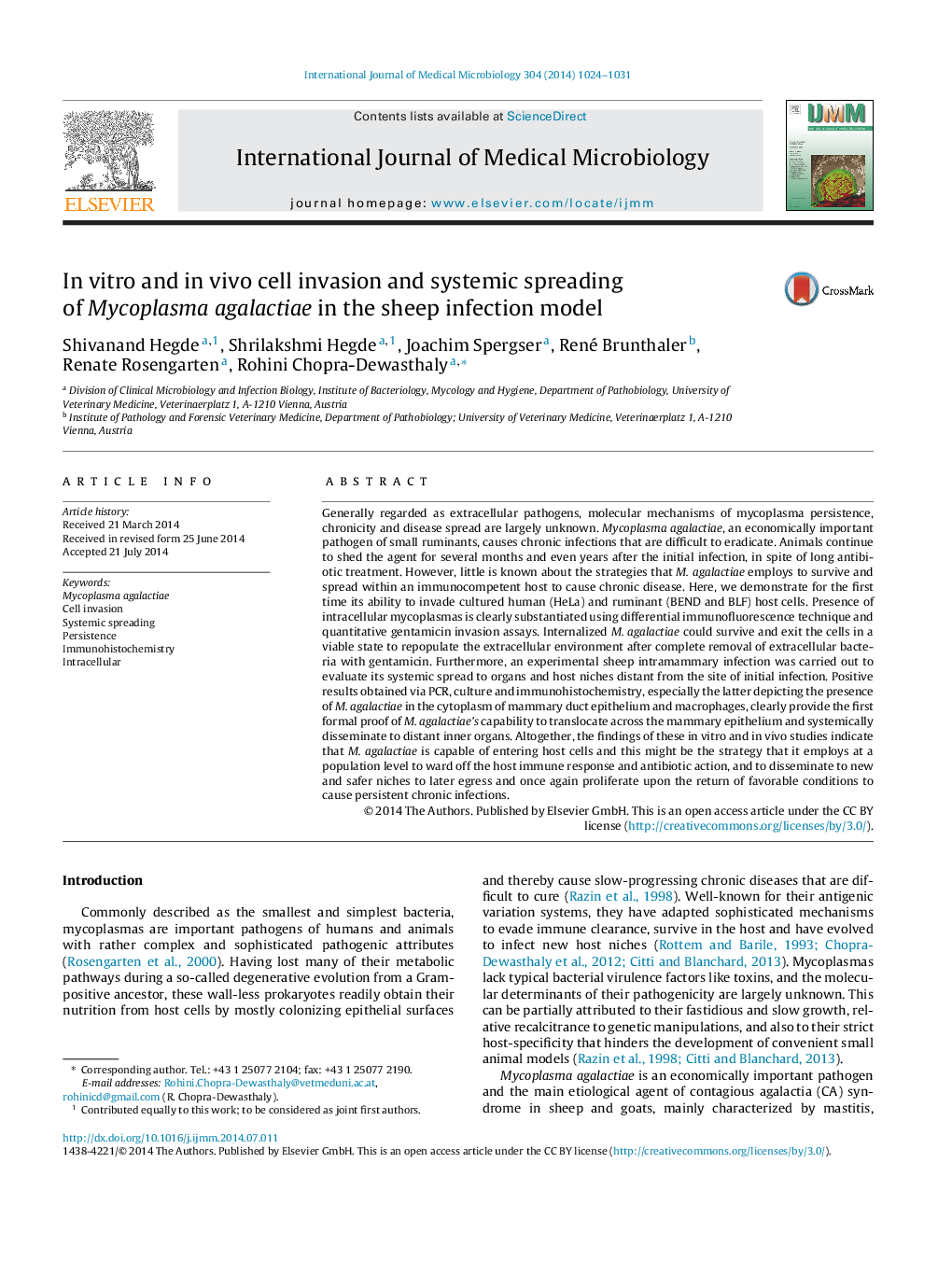| کد مقاله | کد نشریه | سال انتشار | مقاله انگلیسی | نسخه تمام متن |
|---|---|---|---|---|
| 8385446 | 1543692 | 2014 | 8 صفحه PDF | دانلود رایگان |
عنوان انگلیسی مقاله ISI
In vitro and in vivo cell invasion and systemic spreading of Mycoplasma agalactiae in the sheep infection model
دانلود مقاله + سفارش ترجمه
دانلود مقاله ISI انگلیسی
رایگان برای ایرانیان
کلمات کلیدی
موضوعات مرتبط
علوم زیستی و بیوفناوری
بیوشیمی، ژنتیک و زیست شناسی مولکولی
بیوشیمی، ژنتیک و زیست شناسی مولکولی (عمومی)
پیش نمایش صفحه اول مقاله

چکیده انگلیسی
Generally regarded as extracellular pathogens, molecular mechanisms of mycoplasma persistence, chronicity and disease spread are largely unknown. Mycoplasma agalactiae, an economically important pathogen of small ruminants, causes chronic infections that are difficult to eradicate. Animals continue to shed the agent for several months and even years after the initial infection, in spite of long antibiotic treatment. However, little is known about the strategies that M. agalactiae employs to survive and spread within an immunocompetent host to cause chronic disease. Here, we demonstrate for the first time its ability to invade cultured human (HeLa) and ruminant (BEND and BLF) host cells. Presence of intracellular mycoplasmas is clearly substantiated using differential immunofluorescence technique and quantitative gentamicin invasion assays. Internalized M. agalactiae could survive and exit the cells in a viable state to repopulate the extracellular environment after complete removal of extracellular bacteria with gentamicin. Furthermore, an experimental sheep intramammary infection was carried out to evaluate its systemic spread to organs and host niches distant from the site of initial infection. Positive results obtained via PCR, culture and immunohistochemistry, especially the latter depicting the presence of M. agalactiae in the cytoplasm of mammary duct epithelium and macrophages, clearly provide the first formal proof of M. agalactiae's capability to translocate across the mammary epithelium and systemically disseminate to distant inner organs. Altogether, the findings of these in vitro and in vivo studies indicate that M. agalactiae is capable of entering host cells and this might be the strategy that it employs at a population level to ward off the host immune response and antibiotic action, and to disseminate to new and safer niches to later egress and once again proliferate upon the return of favorable conditions to cause persistent chronic infections.
ناشر
Database: Elsevier - ScienceDirect (ساینس دایرکت)
Journal: International Journal of Medical Microbiology - Volume 304, Issue 8, November 2014, Pages 1024-1031
Journal: International Journal of Medical Microbiology - Volume 304, Issue 8, November 2014, Pages 1024-1031
نویسندگان
Shivanand Hegde, Shrilakshmi Hegde, Joachim Spergser, René Brunthaler, Renate Rosengarten, Rohini Chopra-Dewasthaly,